The River just after sunrise was blissfully silent. The dip of the oars, the creak of the oarlocks and the gentle swish of water against the hull of the Skiff were the only sounds. What better way to start a day on the island than with a row in a St. Lawrence River Skiff?
Back in the 1960s, the McElfresh family owned only one motorboat. We were the youngest of three generations on the island and relegated to the old St. Lawrence River Skiff. We were only about one hundred years out of vogue.
Once upon a time, St. Lawrence River skiffs were the personal watercraft of the 19th Century. There were hundreds of them on the River. Some may look at a skiff and think rowboat but the St. Lawrence River Skiff is no rowboat. It’s sleek design—pointed both fore and aft—made it both steady and fast, perfect for plying the St. Lawrence. One pull of the oars sends the craft gliding through the water at more than twice its length. It was the craft of choice for fishing guides who might row 20 to 30 miles a day in all sorts of weather and water conditions.
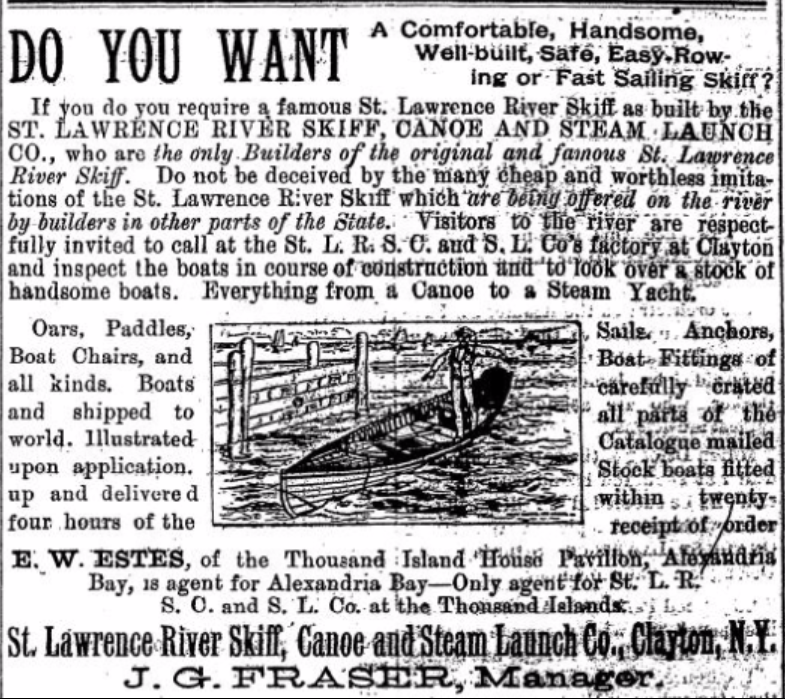
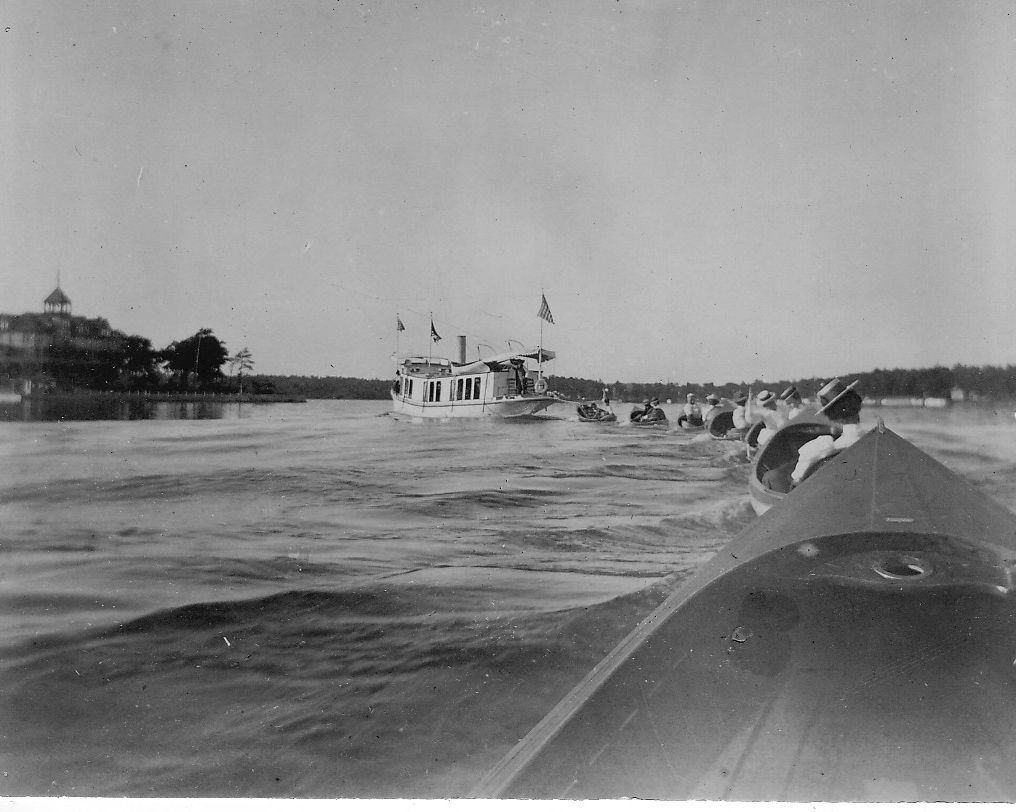
Our Skiff had seen plenty of use over the previous generations. When the “miracle” of fiberglass was introduced in the 1960s, the family fiberglassed the entire outside of the hull to prevent leakage and hopefully reduce wood rot. Now our Skiff looked more “modern” with its new hard-shell exterior and “groovy” electric blue color.
For two decades, if we wanted to go anywhere on the River, we went via the old blue Skiff. Lucky us. We were following in the watery path of the three generations before us.
In 1980, Gary’s parents purchased a used aluminum boat with a motor. For the first time in about ninety years, our St. Lawrence River Skiff was up on a rack in the Skiff house instead of in the water. As our Skiff approached her 100th birthday, Gary’s mother decided to have the skiff expertly restored by Ron Waterson at Arrow Boat Works in Fishers Landing.
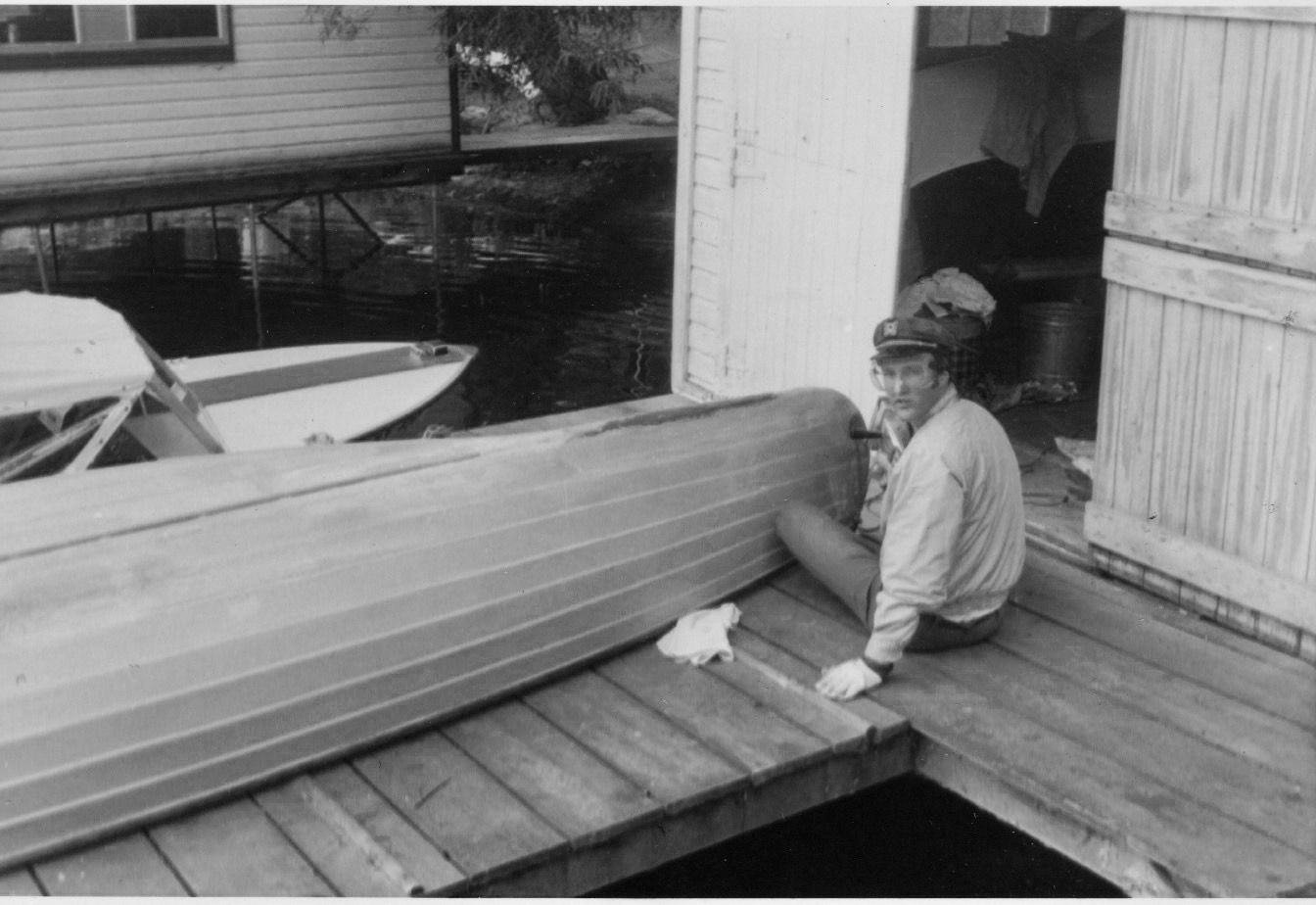
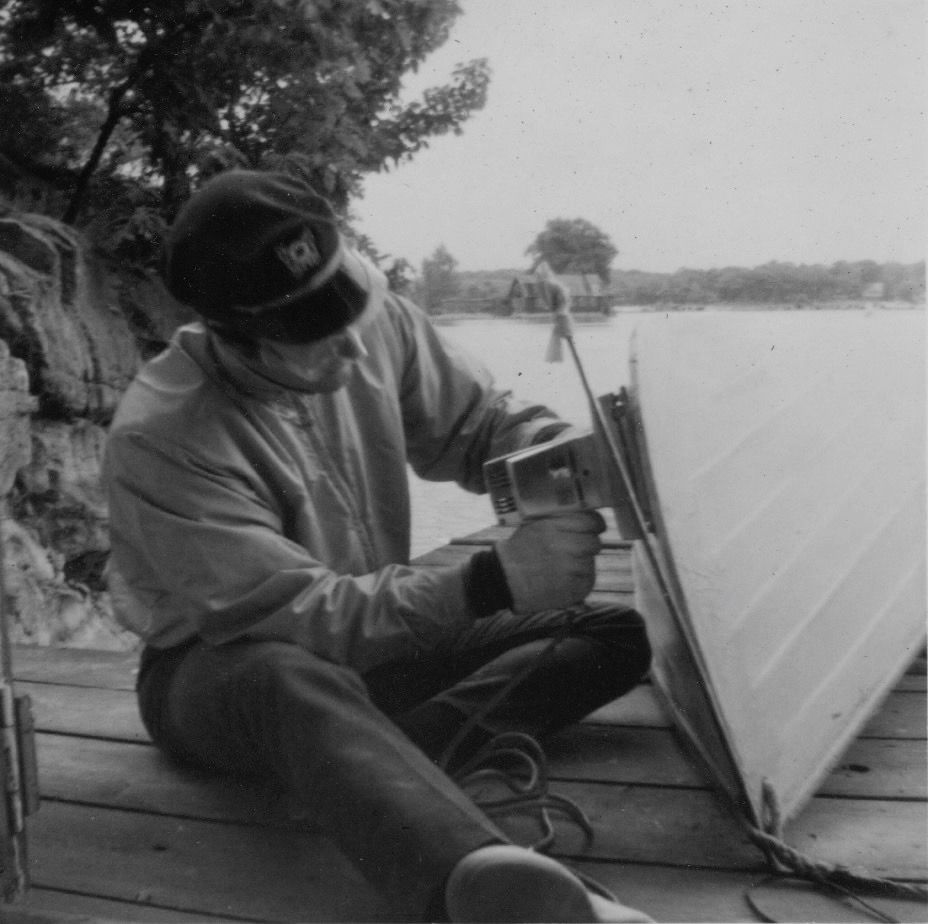
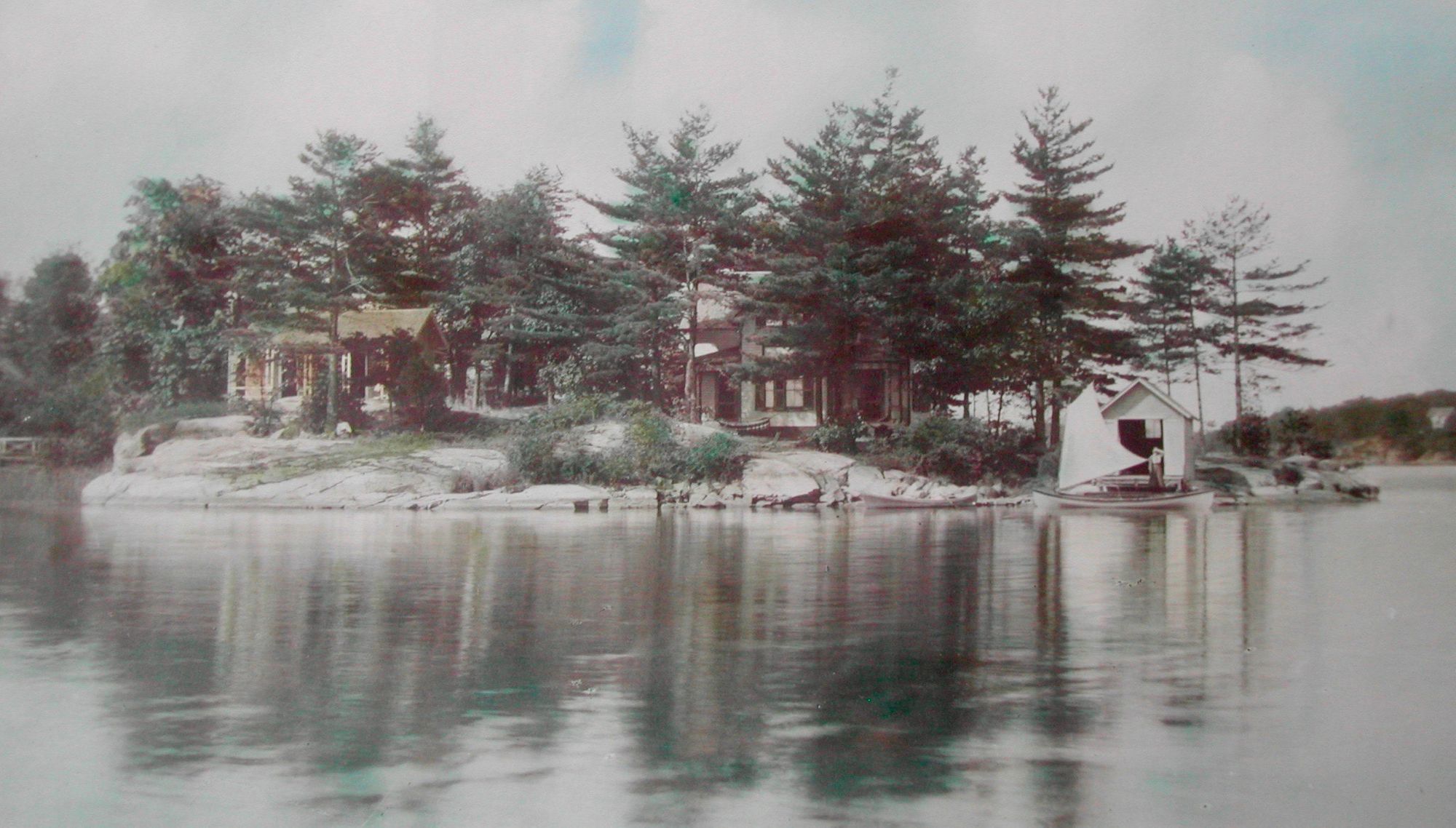
Over the winter of 1991/1992, Ron removed the fiberglass shell. Several cracked planks were switched out for new cedar planking. The keel and stern also needed attention—parts of the keel needed to be removed, and replacement pieces were hand-crafted and installed. Next, he removed old ribs, milled and cut new rib stock, and then steamed and installed the new ribs. Over the new ribs, Ron crafted new flooring. The whole Skiff was then sanded down and varnished. Gary’s mother christened the Skiff when they brought her home. Finally, after 100 years or so, she had a name: Meg.
The exact age and provenance of our beloved Skiff are unknown. The first picture of a Skiff associated with our property shows a much larger sailing skiff. What happened to the larger Skiff? The Skiff house burned down in May of 1912, as did five cottages and two boathouses. Our skiff house was the last structure to catch fire, so I assume someone had time to remove the skiffs and canoes before the structure burned down. So I don’t think it was burned. The story passed down to us was that one of Aunt Alice’s daughters—Olivia or perhaps Edith—gave away a sailing skiff back in the 1930s or 1940s to someone named Robert. Gary’s mother was none too happy about that, as she remembered the sailing skiff. It was given away before any of us were born, so our attention has always been focused on the skiff we have and trying to find out more about its provenance.
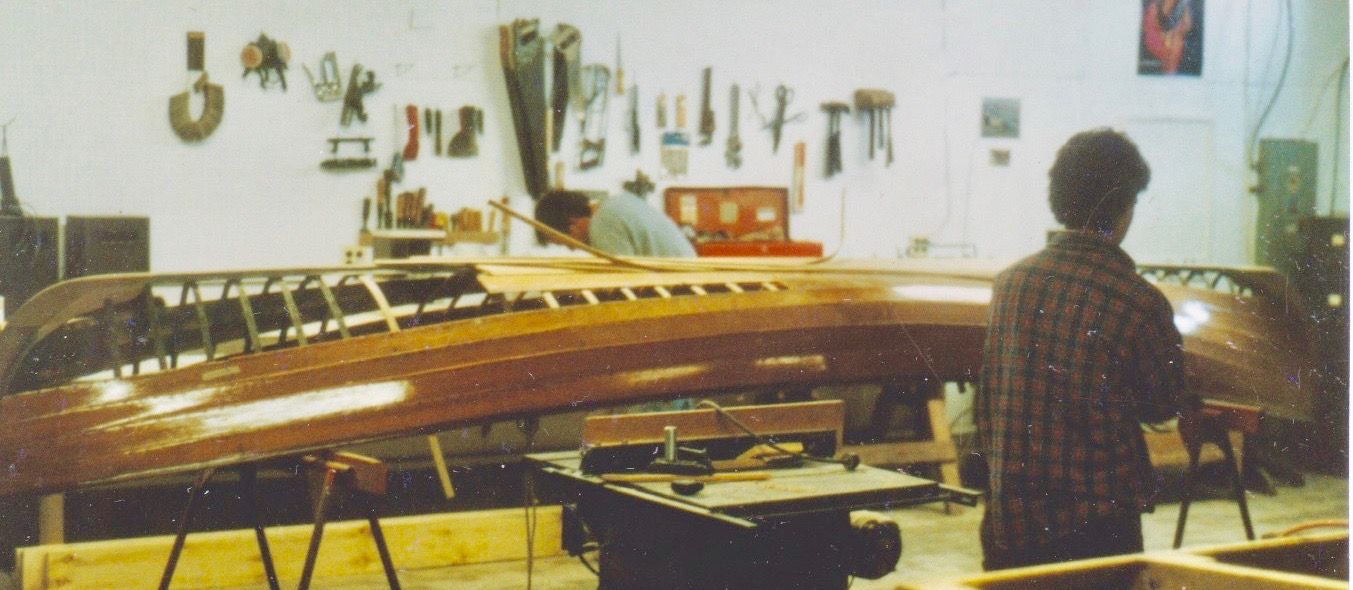
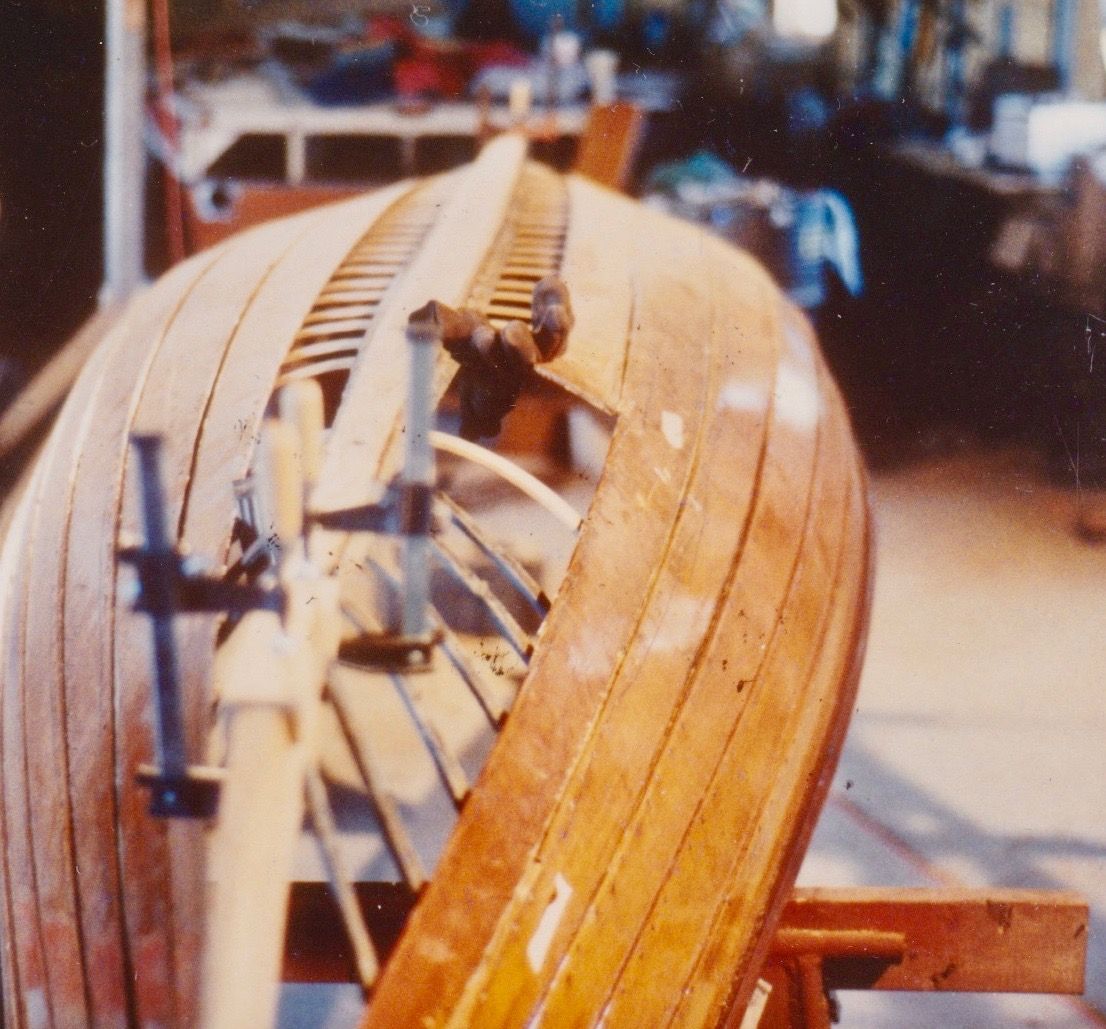
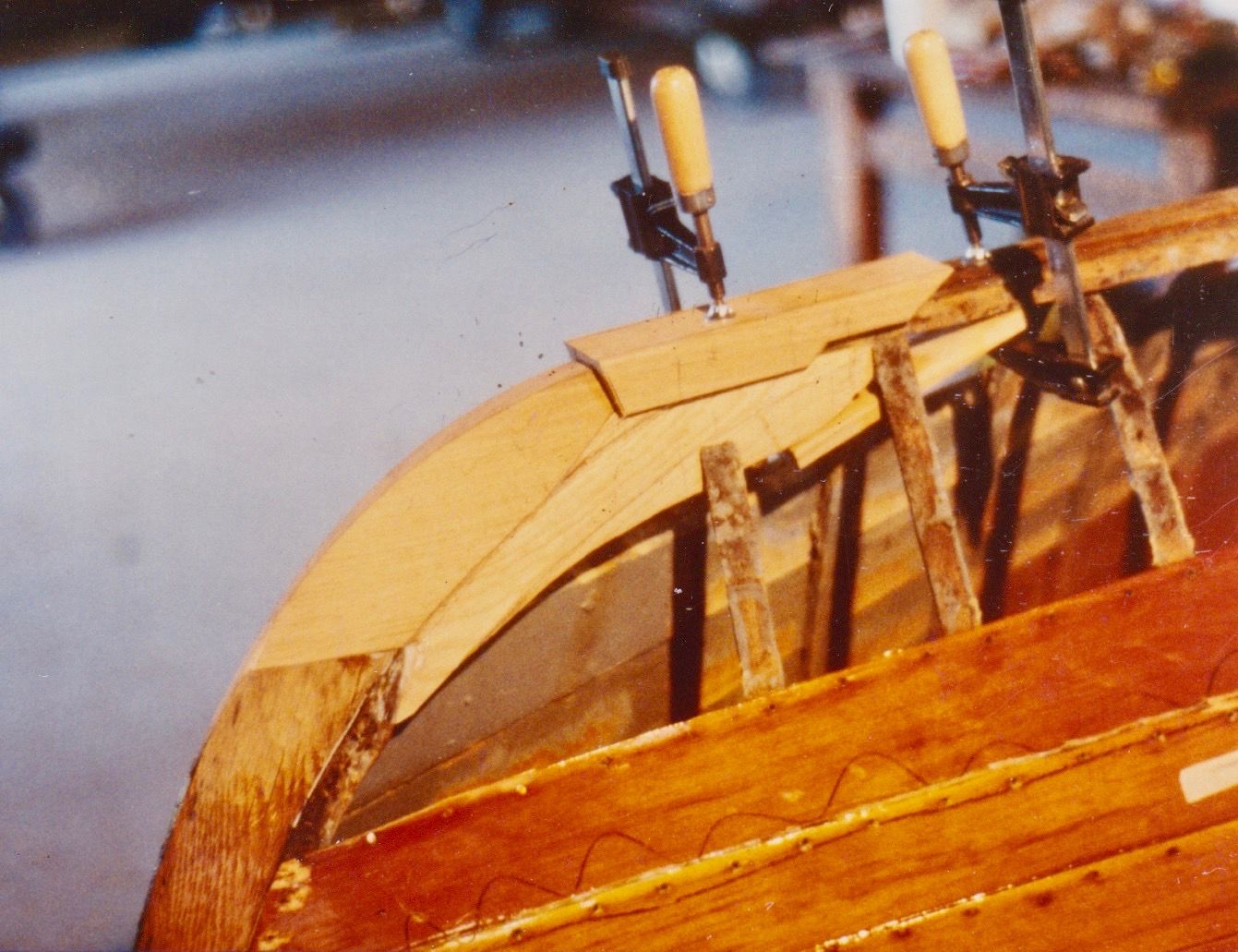
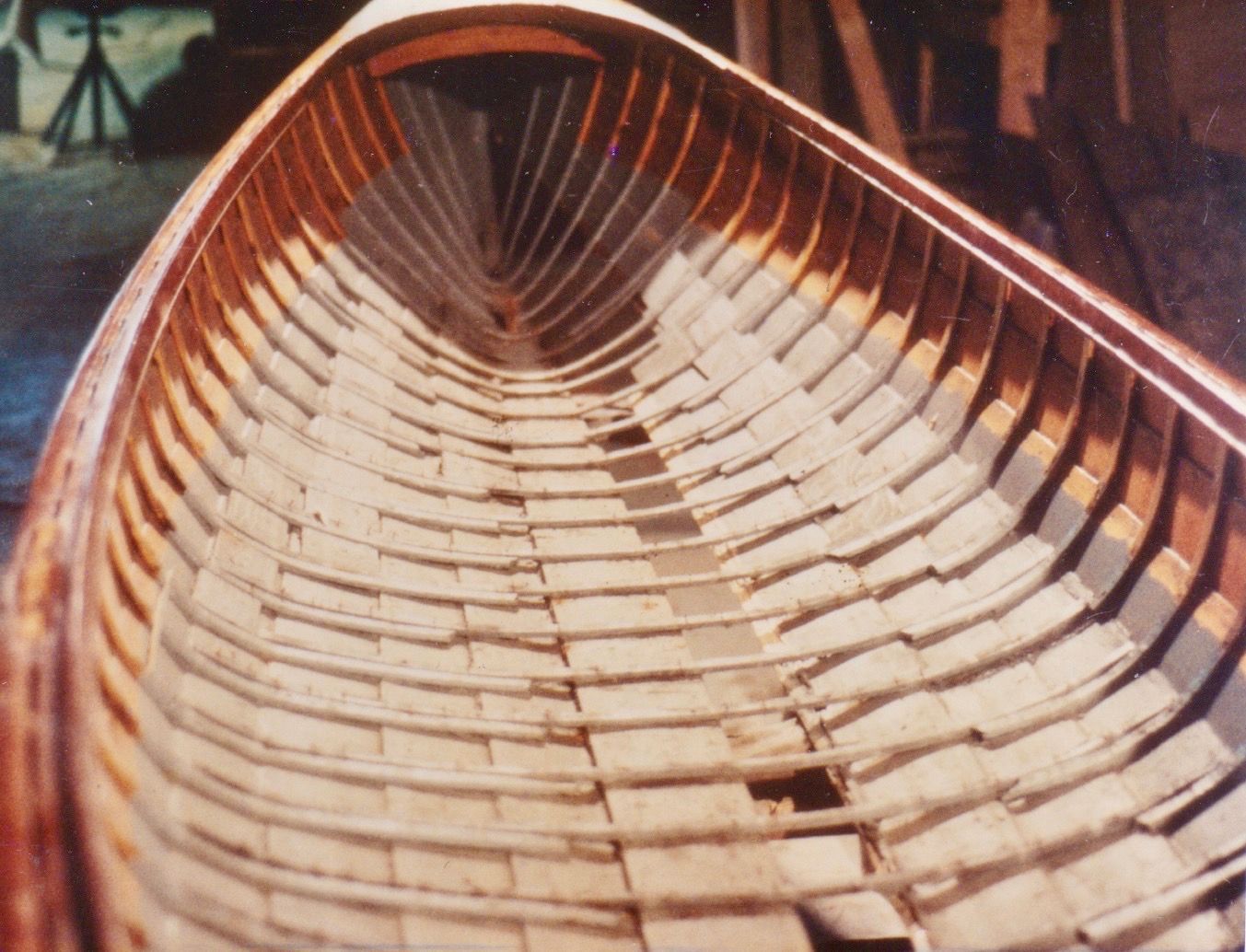
We’ve made several trips to the Antique Boat Museum in Clayton with pictures hoping to identify who built Meg or when she was built. The only conclusion we’ve reached is that Meg was not made by any of the more prominent St. Lawrence skiff building companies. We’re told that back in the 1880s and 1890s, many fishing guides spent their summers fishing and winters making skiffs to sell in the spring. Meg was probably made by one of these many “nameless” skiff builders.
As far as age goes, we think Meg was acquired sometime in the 1890s. Uncle Otis died in 1893 and after that, the cottage was home to mostly women and young children. I’m guessing Aunt Alice purchased a smaller skiff (17 ft. vs. 24 ft.) so it would be easier for her to haul in and out of the water.

This past season, our daughter Michelle, asked if we could have the skiff in the water before she arrived as she hoped to row every morning. We complied. Meg was in the water, soaked up, and ready to use. Every morning, just after sunrise—some mornings before sunrise—Michelle was out on the River. Sometimes I went along. Sometimes one or both of her nieces joined her. Every time, her four-legged friend, Roxy, helped navigate. On my mornings out, I loved watching the patterns the oars made in the still morning waters. It was so quiet, so peaceful. We often did not talk but relished the early morning tranquility.
At this early hour, I can imagine what it was like to be on the River in the 1890s. This is not the first time Meg has plied these waters. I feel connected not only to the River but to our ancestors who came before us. I’m pleased that like the four generations before her, our daughter finds solace and serenity while rowing on the River. It’s like gliding back in time. Maintaining our cottages means that future generations will have a place to stay, but by maintaining our skiff and antique canoes we ensure that future generations will someday be able to glide back in time, just like we do today.
By Lynn McElfresh
Our team member, Lynn McElfresh never ceases to amaze us.
This marks Lynn’s 122th article. Yes, you read that correctly - 122! What subject could she possibly find to interest our readers… Well she found another one! And many of us will look with envy at the photographs she shares.

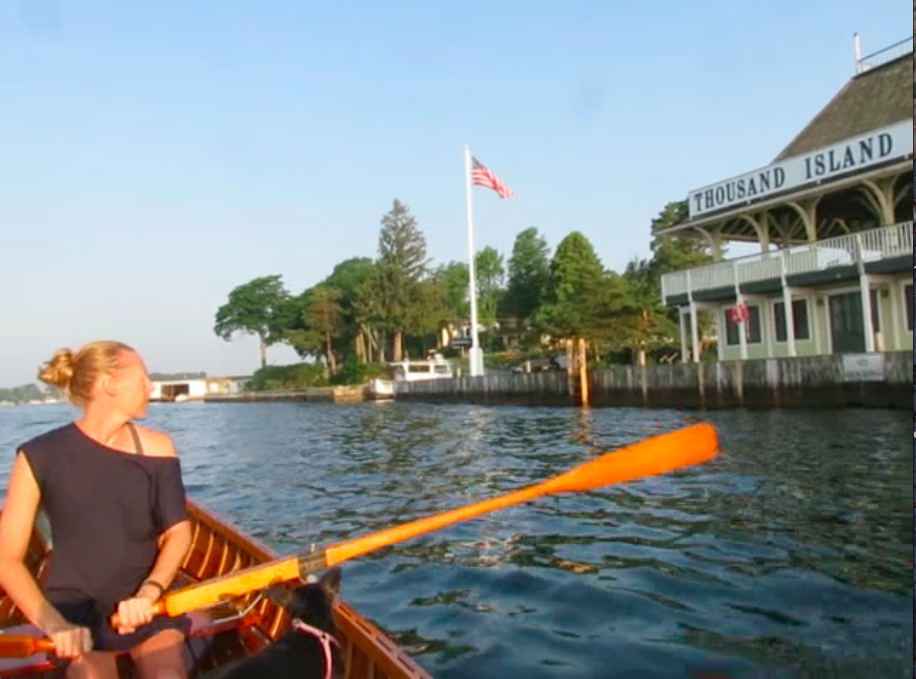
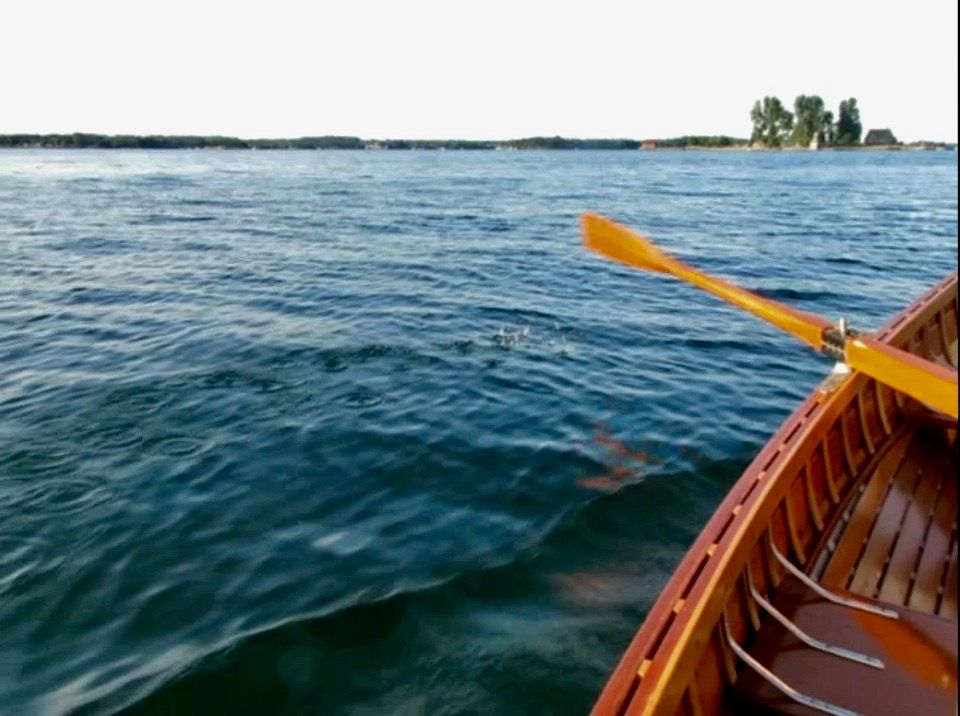
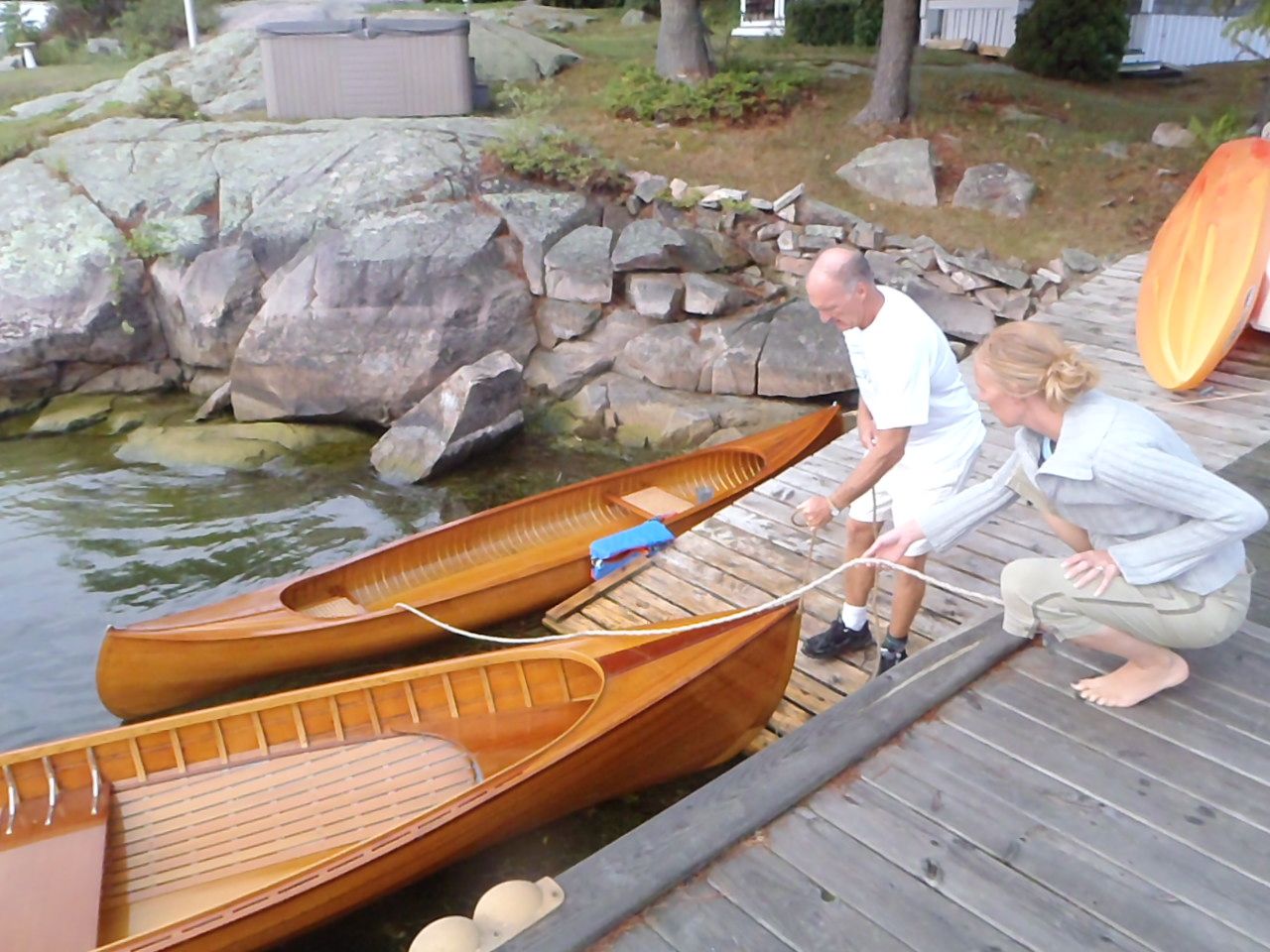
Do you have photographs of a Skiff you refinished? If so, share them on our comment section or send them to Info@thousandislandslife.com.
Thanks again Lynn… You can see all of Lynn’s articles here on the old formatted site, and here for the new format!
Posted in: Volume 14, Issue 4, April 2019, Sports, People, Places, Poetry, History
Please click here if you are unable to post your comment.
